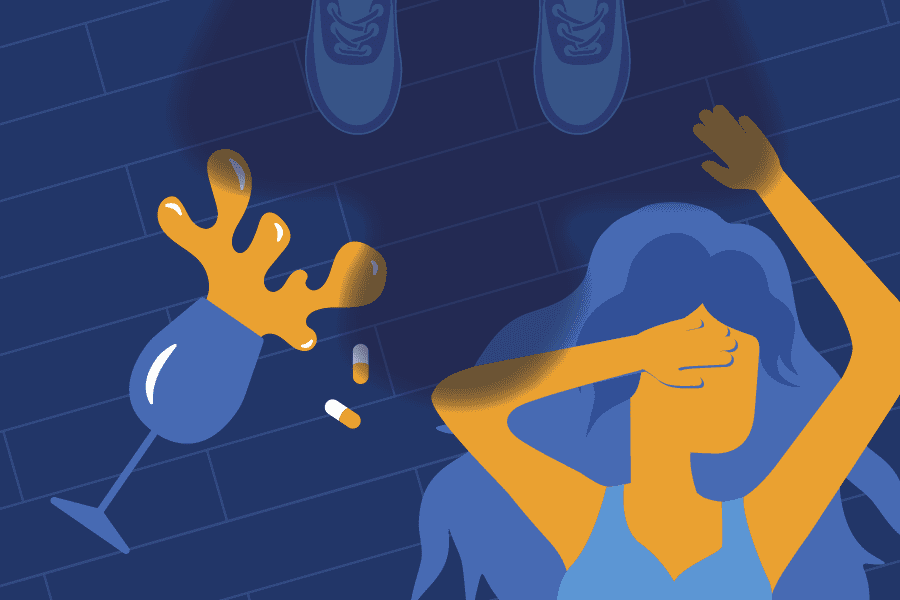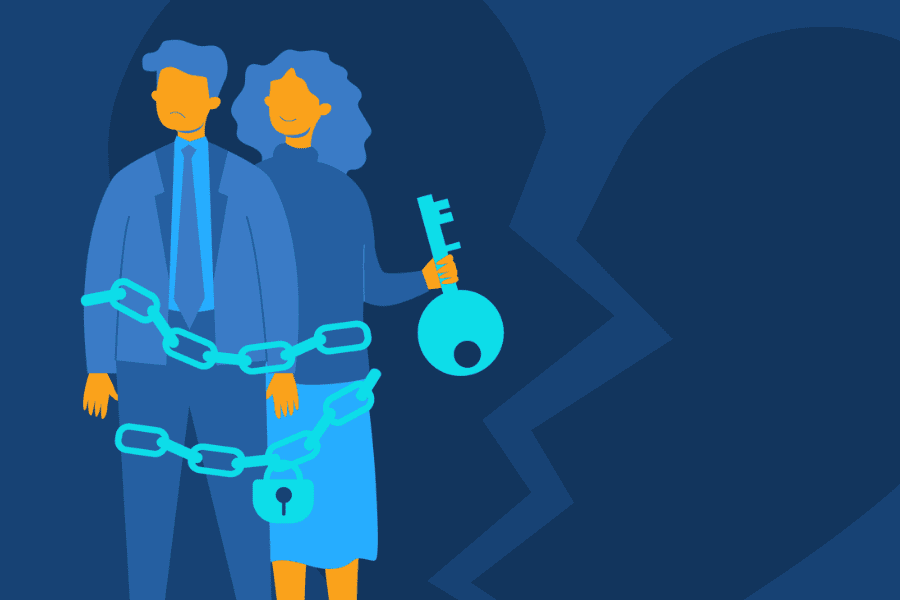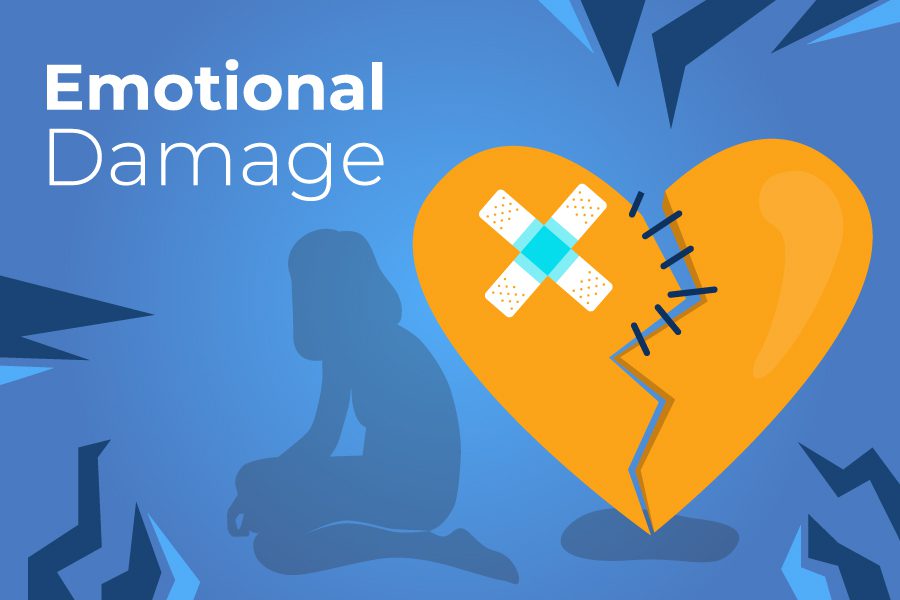Table of Contents
- What Is Trauma?
- What Are Symptoms of Trauma?
- What Is Trauma Therapy?
- What Is CBT (Cognitive Behavioral Therapy)?
- What Is CPT (Cognitive Processing Therapy)?
- What Is EMDR (Eye Movement Desensitization And Reprocessing)?
- How Long Does Trauma Therapy Last?
- When Should You Seek Trauma Therapy?
What Is Trauma?
Trauma is an emotional response to a disturbing or distressing incident or a series of events.
Trauma can make you feel frozen in fear when reminded of a traumatic experience. You might fear the unknown or anticipate the next potential threat. These feelings can hold you back from living a fulfilling and meaningful life.
Traumatic events can range in severity and level of danger. You might feel traumatized by an event that others can shrug off and move on with ease. You might have an underlying mental health issue or lack coping skills if you struggle to process your trauma.
Examples of traumatic events in teens and young adults include:
- Sexual or physical abuse
- Verbal and emotional abuse
- Car accidents
- Witnessing domestic violence
- Being embarrassed in a social situation
- Childhood neglect
- Living through a natural disaster, like a tornado or a pandemic
- Being attacked or assaulted
- School violence
- Living in a dangerous community
- Bullying
- Witnessing physical harm or death of another person
- The sudden and unexpected death of a loved one
Most of these life experiences would cause trauma in anyone. A traumatic experience doesn’t need to harm you physically or threaten your life. You might be a witness to the harm of others, either in your home, school, or community.
Traumatic experiences aren’t always life-threatening. They could be harmful to your emotional and mental well-being. When a person harms you emotionally, you might not feel safe in their presence. Trauma is often rooted in a feeling of not being safe and secure.
There are three types of trauma:
- Acute trauma: This form of trauma occurs after a single incident, like a car crash, rape, or assault. After you survive this incident, you might continue to struggle to feel safe, affecting your behavior and mental health.
- Chronic trauma: Prolonged exposure to trauma can result in chronic trauma. These types of traumatic events could be growing up in an abusive household, dealing with bullying at school for months or years, or surviving a severe physical illness.
- Complex trauma: A combination of acute and chronic trauma can result in complex trauma. For example, you might get in a car wreck and then deal with intense pain for months as you recover.
Childhood trauma usually results from a complex series of events. For teens and young adults, they might feel that once they leave home, they can heal. However, traumatic experiences can have long-lasting psychological effects.
You might develop a disorder called post-traumatic stress disorder (PTSD) if you struggle to recover from symptoms of trauma.
According to the National Institute of Mental Health (NIMH), most people heal from the initial symptoms of trauma naturally. However, “[p]eople who have PTSD may feel stressed or frightened, even when they are not in danger.”
Symptoms of trauma and PTSD can vary from person to person. You can prevent trauma from developing into PTSD if you recognize the signs early on. The sooner you get help for your trauma, the sooner you can get back to living the life you deserve.
What Are Symptoms of Trauma?
Common symptoms of trauma in teens and young adults include:
- Difficulty concentrating
- Irritability and mood swings
- Outbursts of anger
- Withdrawing from others and isolation
- Feeling helpless or hopeless
- Anxiety and fear
- Feelings of guilt or shame
- Emotional numbness
- Being easily startled or surprised
- Nightmares and difficulty sleeping
- Tiredness and fatigue
- Feeling on-edge or agitated
- Racing heartbeat
- Muscle tension and physical pains
- Being clingy around parents or other loved ones
You might also have a symptom called a “flashback.” A flashback is a re-experiencing of a traumatic event, including nightmares or feeling the physical sensations of your trauma. Flashbacks can be triggered by thoughts, feelings, or specific places and people.
Symptoms of trauma might occur months or years after the event or series of events. When you have these symptoms for a month or more, you might be diagnosed with PTSD. Symptoms of PTSD can negatively affect you or your loved one’s quality of life.
Trauma can interfere with your ability to live a normal, happy, and healthy life.
You might start to avoid people, places, or situations that trigger your symptoms. Avoidance could be a maladaptive coping strategy that leads to several issues in your life. You might isolate or abuse substances to avoid your feelings.
Treating trauma can be challenging. You need to dive into painful memories to move forward. You might also need to deal with co-occurring disorders, like substance abuse or depression, along with trauma.
However, mental health professionals can effectively treat trauma and PTSD with several methods. You might need to try a few different treatment modalities to find the right fit for you or your loved one.
What Is Trauma Therapy?
Trauma therapy can help you manage your emotional responses to trauma, learn new coping skills, and find healthy replacements to maladaptive coping mechanisms.
There are many different types of therapy to treat trauma. You might need to treat co-occurring disorders, like substance use disorders or social anxiety, resulting from your symptoms.
All forms of trauma therapy usually involve components of both talk and exposure therapy. With talk therapy, you discuss your feelings and thoughts with a mental health professional. During exposure therapy, you practice dealing with triggering events in a healthy way.
Examples of trauma therapy include:
- Eye movement desensitization and reprocessing (EMDR)
- Cognitive-behavioral therapy (CBT)
- Cognitive processing therapy (CPT)
Each of these forms of therapy is an evidence-based practice. A mental health professional can guide you in finding the right type of treatment for your needs. You might begin trauma treatment during rehab if you have a co-occurring substance use disorder.
Many drug and alcohol treatment facilities realize that trauma is often an underlying mental health issue driving addiction. Most addiction treatment centers can help you with trauma or refer you to a mental health professional following active treatment.
What Is CBT (Cognitive Behavioral Therapy)?
Cognitive-behavioral therapy (CBT) is one of the most effective treatment modalities for mental health disorders like trauma.
Trauma can affect how you think and feel about yourself, other people, and the world. You might develop false beliefs about the world around you or struggle to trust others, even loved ones. These negative thoughts can affect your behaviors.
CBT helps you learn to take ownership of your thoughts and beliefs.
You might feel helpless about your thoughts and feelings, assuming they are automatic and beyond your control to manage. When you take ownership of your thoughts, you can change unproductive, irrational, or negative thoughts.
With CBT, your therapist will help you restate your negative thoughts to productive ones. For example, you might think, “I’ll never be happy.” Your therapist will help you challenge this thought and restate it to something positive, like “I can find my own happiness in life.”
The primary concept behind CBT is that thoughts influence behaviors, and if you change your thought patterns, you can change your behavioral patterns as well.
CBT is one of the most commonly used forms of psychotherapy, treating a range of symptoms and disorders. This type of therapy can help you with trauma and other co-occurring issues, like anxiety or depression.
What Is CPT (Cognitive Processing Therapy)?
Cognitive processing therapy (CPT) is a specific type of CBT used for treating trauma.
While CBT might focus on other mental health issues resulting from trauma, CPT focuses specifically on the traumatic experiences. You will re-examine your trauma story and your beliefs resulting from your experiences.
CPT will take about 12 weeks or three months to complete. Your first few sessions will be about the treatment process in general, and your therapist can teach you more about trauma and PTSD. As you get comfortable, you can start to discuss your trauma in more detail.
During CPT sessions, you will work on processing the traumatic events that caused distressful feelings, negative self-talk, and false beliefs about the world and other people.
Your therapist might ask you to write out your trauma experience and the negative thoughts you now have. CPT could involve homework between sessions, usually with worksheets and other handouts your therapist will provide for you.
By doing the work both in and out of the therapist’s office, you can heal from your trauma more quickly. CPT, like CBT, involves restating negative beliefs into productive thoughts. As you work through your thoughts, you might start to feel less distress about your trauma.
What Is EMDR (Eye Movement Desensitization And Reprocessing)?
Eye movement desensitization and reprocessing (EMDR) is a type of trauma therapy that uses bilateral stimulation to retrain how you deal with trauma.
During an EMDR therapy session, your clinician will help you reprocess unhealthy thinking patterns as you recall your trauma memories. EMDR uses bilateral stimulation, which helps to keep you calm as you reprocess your thoughts and feelings.
Bilateral stimulation involves repetitive sensations that occur from one side of the body to the other. In most EMDR sessions, your therapist will guide your eye movements from left to right with a pen. They might also use moving lights that your eyes will follow.
Bilateral stimulation with eye movements helps desensitize your heightened emotional reactions as you retell your trauma story.
The repetitive eye movements can have a calming effect or even be distracting. Your therapist might teach you other calming techniques before your sessions, like deep breathing and counting to ten.
For those who are visually impaired, your therapist can use other sensations to provide bilateral stimulation. They can use sounds alternating from the left to right ear or alternate touch from one side of the body to the other.
When you feel desensitized to your trauma memories, your feelings can start to shift during your sessions. You might find it easier to tell your trauma story due to the calming effects of eye movements and other calming techniques.
You can reprocess your feelings when you tell your trauma story in a calm and safe place.
Your therapist might ask you how you feel both before and after your sessions to check your progress. As you continue through the phases of EMDR, you should start to feel calmer while recalling your trauma.
When you feel safe and calm about your trauma memories, you reprocess how your trauma affects your emotional and mental health. You can then rethink the way you think about yourself, others, and the world at large.
How Long Does Trauma Therapy Last?
Trauma therapy can vary in length depending on the modality and other factors.
When you are in trauma therapy, you specifically focus on processing the trauma. EMDR can take anywhere from three to 12 weeks, while CPT takes 12 weeks to complete. In general, you can expect about three months to reprocess your trauma.
You might need to continue with another form of therapy after reprocessing your trauma.
Traumatic experiences can impact many areas of your life. You could develop other issues due to the unhealthy coping mechanisms used to avoid trauma triggers. Your trauma therapist can recommend treatment options to deal with these issues.
Depression, anxiety, and substance abuse are common co-occurring conditions with trauma and PTSD:
- Depression
- When you withdraw from everyday activities to avoid trauma triggers, you can start to feel hopeless about life in general.
- Long-lasting feelings of hopelessness can cause depression and other mood disorders.
- Anxiety
- Anxiety is a fear-based disorder where you struggle with feeling overwhelmed or nervous during everyday life.
- You might experience fear about different life experiences after trauma, like getting into a car or going out in public.
- Substance abuse
- People with trauma might use substances to self-medicate uncomfortable feelings, numb themselves to triggers, or regulate intense emotional responses.
- Substance use could be a maladaptive coping mechanism to avoid distressing feelings and thoughts about the traumatic experiences.
After trauma-focused therapy, you might want to consider continuing treatment for co-occurring disorders. Sometimes, you could feel relief from depression or anxiety following trauma therapy. Treating these co-occurring issues is critical to your mental health recovery.
When Should You Seek Trauma Therapy?
You should seek trauma therapy when you have symptoms of trauma for one month or longer.
Sometimes, you might not have symptoms right away after a traumatic event. You might notice your symptoms months or even years after. You might be able to avoid triggers for years before encountering a reminder of your trauma.
For example, you might feel safe and secure at home during high school and choose not to go out often or avoid strangers. However, if you move away to attend college, you might be triggered by the lack of parental guidance or being in an unfamiliar place.
For those with complex trauma, you might not notice the impact of trauma because it might be “normal” to you.
If you grew up in a household with parents who were neglectful or abusive, you might not notice the effects of trauma. You could continue to live with the impact; however, you don’t realize that feeling on-edge or unsafe all the time is unhealthy.
The effects of trauma can negatively impact critical areas of your life.
You might have difficulty trusting others and struggle to form close relationships. As you avoid things that make you feel triggered, you could be missing out on what you need to heal from trauma.
Trauma causes you to feel like you are always in danger or are looking for the next threat.
Feeling on edge or that something terrible will happen can cause you to feel hopeless about your life. When you find that you can’t achieve your goals or live your dreams due to trauma, you should seek trauma therapy to get your life back.
You might also struggle with co-occurring disorders that don’t seem to get better during treatment.
You might avoid talking about trauma during therapy for other issues. You might feel comfortable getting treatment for depression or anxiety, yet you struggle to open about what’s happened to you in the past that caused these issues.
For example, if you are in substance use treatment, you might hold back from discussing the trauma and hope to heal from addiction without dealing with trauma. However, if you don’t recover from underlying trauma, you could relapse on drugs or alcohol when triggered.
Trauma therapy can help you dive deeply into healing from the root causes of mental health and substance use disorders.
Trauma therapy might make you feel uncomfortable or vulnerable. You could become protective of yourself and not want to relive the experiences from your trauma memories. You could then become stuck in a cycle of treatment and relapse by avoiding the root causes.
Healing from trauma means that you need to walk through the trauma to reprocess your thoughts and feelings. When you open up and talk about your trauma, you can learn new coping methods that help you thrive toward living the life you deserve.
Trauma therapy can help you heal deep psychological wounds to live a happy and fulfilling life, free of fear and insecurity. Sandstone Care is here to support teens and young adults with substance use and mental health disorders. Call (888) 850-1890.












